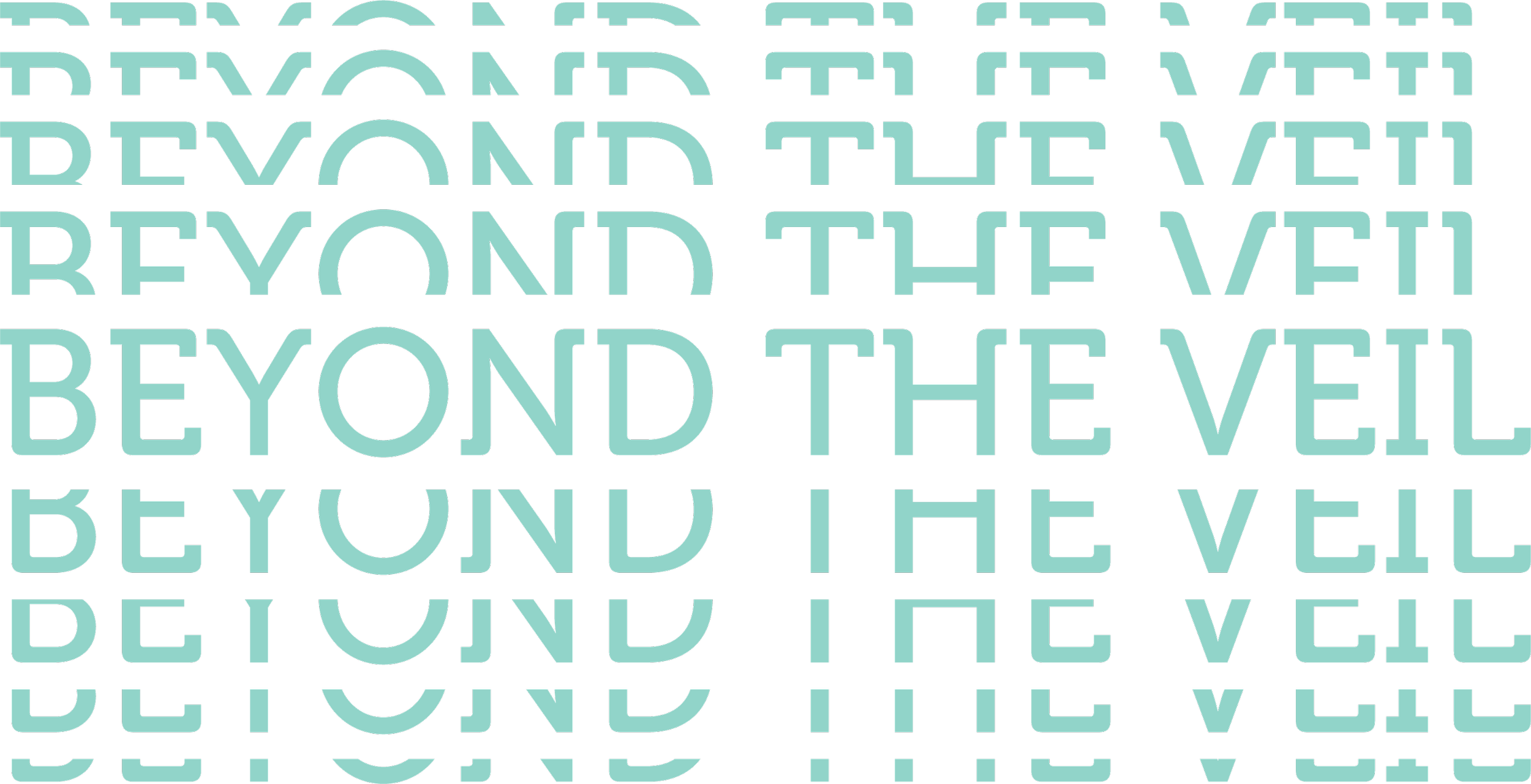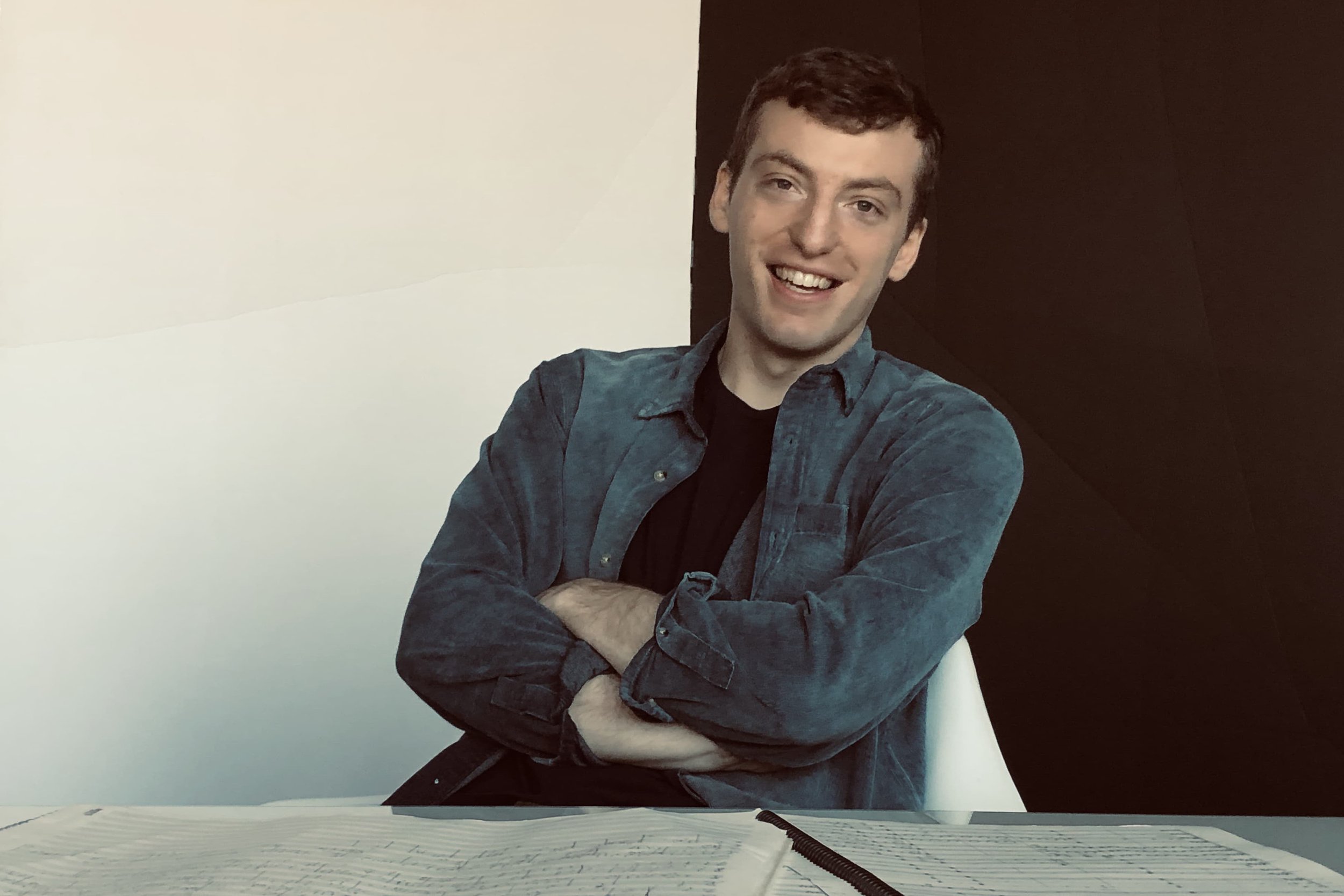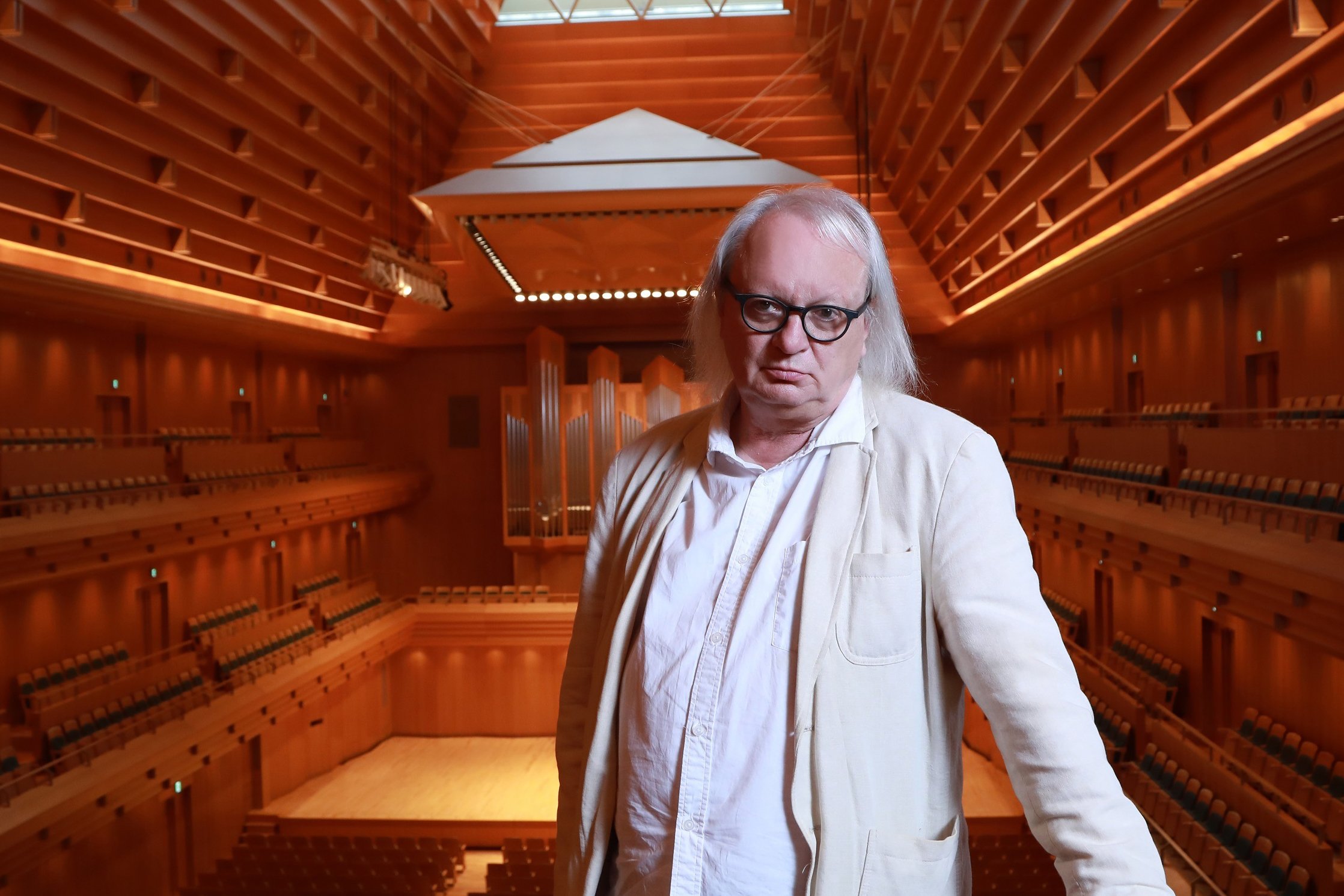
10/23/23 – 7:30pm
First Congregational Church
1031 S. Euclid Ave
Sarasota FL 34237
Streaming Online via www.ensrq.org
Season 8 opens with an ethereal glimpse into the world beyond, with haunting works for string quartet and piano from some of the brightest new voices. String quartets from Nia Imani Franklin and Julia Adolphe bookend a captivating trio for violins and piano from Chris Rogerson. Philippe Manoury’s monumental Tensio for string quartet and live electronics transports you to a different world.
enSRQ Artists Underwritten by Bob & Debbie Hendel and Ben & Gigi Huberman
Live-Streaming made possible by the generosity of Edward and Annette Eliasberg
Program
| Nia Imani Franklin | Burgundy in Autumn (2019) – 4’ |
| Samantha Bennett, violin Jennifer Best Takeda, violin Stephanie Block, viola Natalie Helm, cello |
| Julia Adolphe | Veil of Leaves (2014) – 9’ |
| Samantha Bennett, violin Jennifer Best Takeda, violin Stephanie Block, viola Natalie Helm, cello |
| Chris Rogerson | Afterword (2020) – 14’ |
| Samantha Bennett, violin Jennifer Best Takeda, violin Hannah Sun Ripert, piano |
| Philippe Manoury | String Quartet No. 2 ‘Tensio’ (2010) – 35’ |
| Samantha Bennett, violin Jennifer Best Takeda, violin Stephanie Block, viola Natalie Helm, cello Tina Tallon, live processing |
Nia Imani Franklin (b. 1993)
is a composer, actress, conductor, and singer who has had her music performed by the Dallas Symphony Orchestra, Friction Quartet, Saskatoon Symphony Orchestra, and many others. Nia also became the Composer in Residence at Festival Napa Valley in 2021, where she premiered several works and was awarded the Darioush and Shahpar Khaledi Prize for Excellence and Innovation in Classical Music. After concluding her Lincoln Center fellowship in New York City, she earned the jobs of Miss New York 2018 and Miss America 2019. In September of 2021 Nia released her EP, “Extended,” which featured her RnB songs, and her orchestra piece, “Chrysalis Extended,” which has nearly 4 million views on her TikTok profile. In February of 2022 Duward Ensemble premiered Nia’s “Vingt-Huit” a piece that was commissioned for chamber ensemble and it was performed at East Carolina University.
Nia holds a bachelor’s degree in Music Composition and Theory from East Carolina University in Greenville, North Carolina, as well as a master’s degree in Music Composition from The University of North Carolina School of the Arts in Winston-Salem. In 2019, she founded Compose Her - an initiative that seeks to empower women in music. Nia is on the board of Opera On Tap, which is a non-profit organization based in New York City and dedicated to making opera accessible to all. She also was recently appointed to the Board of Trustees of The University of North Carolina School of the Arts in January 2023.
Burgundy in Autumn
I wrote Burgundy in Autumn with the fall season in mind, and my intention was to evoke feelings of warmth. I focused on bringing out the most in each instrument to create a cohesive sound across the ensemble. The piece carries a nostalgic quality and embraces a tonal style harmonically. The melody is shared by all members of the ensemble, and the compound time signature combined with the ascending and descending gestures takes the listener on a journey as if on a boat rocking back and forth gently. It has been performed by Friction Quartet and Orpheus Chamber Orchestra, and other string quartet groups.
–Nia Imani Franklin
Julia Adolphe (b. 1988)
Adolphe’s music is described as “alive with invention” (The New Yorker), “colorful, mercurial, deftly orchestrated” (The New York Times) displaying “a remarkable gift for sustaining a compelling musical narrative” (Musical America). Her works are performed across the U.S. and abroad by renowned orchestras and ensembles such as the New York Philharmonic, Los Angeles Philharmonic, Boston Symphony Orchestra, Cincinnati Symphony Orchestra, Gewandhausorchester Leipzig, Los Angeles Chamber Orchestra, Norwegian Chamber Orchestra, Brooklyn Youth Chorus, Verona Quartet, soprano Hila Plitmann, and pianist Gloria Cheng, among others. Her awards include a Lincoln Center Emerging Artist Award, an OPERA America Discovery Grant, an ASCAP Young Composer Award, and a Charles Ives Scholarship from the Academy of Arts and Letters.
Adolphe’s 2022 orchestral work, Makeshift Castle, co-commissioned by the Boston Symphony Orchestra and Gewandhausorchester Leipzig, received multiple performances in Boston and Tanglewood, with repeat performances upcoming in 2023 at Tanglewood and Musikfest Berlin at the Berlin Philharmonie. The Boston Globe described the work as possessing “dramatic clarity...with resourcefully orchestrated music that keeps the ear engaged.” Adolphe’s 2021 violin concerto, Woven Loom, Silver Spindle, commissioned by the LA Philharmonic for concertmaster Martin Chalifour, was hailed by the LA Times as “ambitious,” with “melodic shards of ever-varying character,” concluding with an “ethereal shimmer.”
Passionate about de-stigmatizing mental illness and dispelling the myth of the tortured artist, Adolphe is the creator and host of the podcast LooseLeaf NoteBook. Produced in partnership with New Music USA, LooseLeaf NoteBook uncovers the connection between creativity and mental health, with a focus on nurturing artistry, emotional intelligence, and self-care. Adolphe shares her creative process, personal experience with Generalized Anxiety Disorder and journey towards mental health alongside guests from across creative fields to provide inspiration, a space for open dialogue, and paths towards healing through artistic self-expression.
A native New Yorker living in Nashville, Adolphe holds a Masters of Music degree in music composition from the USC Thornton School of Music and a Bachelor of Arts degree from Cornell University. Her composition teachers include Steven Stucky and Stephen Hartke.
Veil of Leaves
Veil of Leaves overlaps two mirroring processes: the diverging and merging of musical voices. At first, a single melody unwinds, drifting slowly apart as the music twists and turns. In the wake of this unfolding line remains a fading harmony; the string unisons diverge leaving a swirl of pitches. Like the veins of a leaf, the music branches outward, forming a web of interweaving voices. Two and four-part contrapuntal lines arise from the texture as the melody sounds vertically. In the second half, a veil-like counter-motif appears in the string harmonics, a gesture that is at once airy and transparent as well as highly rhythmic and articulate. To mirror the initial movement of a single pitch moving outward, this second melody descends and merges with a rocketing, energetic ascent in the cello. The low strings rise from the depths while the high violins float downwards. They unite near the opening unison pitch, evoking the color and sound world of the work’s beginning.
–Julia Adolphe
Chris Rogerson (b. 1988)
Hailed as a “confident new musical voice” (The New York Times), a “big discovery” (The Philadelphia Inquirer), and a “fully-grown composing talent” (The Washington Post), Chris Rogerson’s music has been praised for its “haunting beauty” and “virtuosic exuberance” (The New York Times). Rogerson’s music is often characterized by its lyricism: recent notable works include Of Simple Grace, for cellist Yo-Yo Ma, his violin concerto, for Benjamin Beilman and the Kansas City Symphony, and Dream Sequence, for Anne-Marie McDermott and the Dover Quartet. Rogerson’s music has been programmed at venues around the world including Carnegie Hall, the Library of Congress, the Kennedy Center, Wigmore Hall in London, Prague’s Rudolfinum, Radio France, and the Musikverein in Vienna.
An avid traveler who has visited over 90 countries around the world, Rogerson’s work is frequently evocative of a sense of place: Four Autumn Landscapes, a clarinet concerto written for Anthony McGill, is a portrait of his childhood home in Buffalo, New York; String Quartet No. 4, commissioned for the Escher Quartet, draws from his experience in a remote corner of Afghanistan; and his piano concerto, Samaa’, commissioned by Bravo! Vail for Anne-Marie McDermott and the St. Paul Chamber Orchestra, is inspired by a recent trip to Yemen.
Rogerson also regularly collaborates with artists in other disciplines: recent examples include Sacred Earth, for mezzo-soprano J’Nai Bridges with video by Emmy-nominated director and National Geographic photographer Keith Ladzinski, and Azaan, a play written for the Oregon Symphony in collaboration with Dipika Guha. His work has been featured in a variety of mediumsfrom comedian Joe Pera’s web series “How to Make It in USA” to ballet by choreographer Claudia Schreier.
Born in 1988, Mr. Rogerson studied at the Curtis Institute of Music, Yale School of Music, and Princeton University with Jennifer Higdon, Aaron Jay Kernis, Martin Bresnick, and Steve Mackey. He is represented by Young Concert Artists, Inc. and served as YCA Composer-in-Residence from 2010-2012. He also is one of two composers on the roster of Manhattan Chamber Players. In 2012, he co-founded Kettle Corn New Music, a new music presenting organization in New York City, and currently serves as its co-artistic director. In 2016, Mr. Rogerson joined the Musical Studies Faculty at the Curtis Institute of Music in Philadelphia, where he lives full-time.
Afterword
There is something noble, sweeping, and grand about looking back on life, reflecting on life’s triumphs, pains, joys, and mysteries. I composed this piece after Jessye Norman’s death, and listened to her sublime recording of Strauss’s autumnal Four Last Songs frequently. Strauss perfectly captures this feeling of contemplation, especially in the final song “Im Abendrot”. In Afterword, I make subtle references to this song.
I also composed this piece while reading Hanya Yanagihara’s novel A Little Life, which is at its core a meditation on life’s sweetness and anguish. Without spoiling the novel, one of the characters experiences unimaginable pain. To me there is something particularly poignant about someone who reflects on a difficult life: the shortness of it, how cruel it can be, how ephemeral, how sweet.
Afterword is dedicated to my great friend Jacob.
–Chris Rogerson
Philippe Manoury (b. 1952)
Born in Tulle, Philippe Manoury is one of the world’s leading composers and computer music researchers. He studied composition with Gerard Condé and Max Deutsch (one of Schoenberg’s first students in Vienna), and at the Conservatoire National de Musique de Paris, with Michel Philippot and Ivo Malec. In 1975, he undertook studies in computer assisted composition with Pierre Barbaud [fr], and joined IRCAM as a composer and electronic music researcher in 1980. From 2004 until 2012, Manoury served on the composition faculty at the University of California, San Diego, where he taught composition, electronic music, and analysis in the graduate program. After retiring from teaching at UCSD, he currently lives in Strasbourg, France. Manoury’s work is strongly influenced by Pierre Boulez, Karlheinz Stockhausen, and Iannis Xenakis, and his early work from 1972 to 1976 combines serial punctualism with the densely massed elements characteristic of the music of Stockhausen and Xenakis, and the paintings of Jackson Pollock.
Since the 1980s, Manoury has been closely associated with the American computer researcher Miller Puckette, first at IRCAM and subsequently at UCSD. The Sonus ex machina series of works (Jupiter, Pluton, Neptune and La Partition du Ciel et de l’Enfer), which were developed in collaboration with Puckette, are among the first pieces to utilize real-time audio signal processing, and Pluton was the first ever composition using Puckette’s groundbreaking software Max.
Tensio
When I compose, one of the great difficulties lies in the choice of the title. For me, the choice of notes, rhythms, sounds is nothing compared to that of the title. The title must summarize, signify, identify, even if it can evoke, suggest, give food for thought. How do you summarize music when it is so difficult (but not impossible) to talk about it? But one day you have to choose. So I chose Tensio . It’s an Italian word meaning “tension.” My first quartet is called Stringendoand the following ones – the ones I plan to write – will all have Italian, not German, names. History of deterritorializing history. The tension in question here is of a physical order: it is that of the strings, which are tense on the instruments which are going to be played and which I have exacerbated in electronic music. It seemed salutary to me to return to this primordial image of a rope stretched between two points, and to make it play in extreme regimes that only technology can glimpse. But other variations of tension, more psychological and more musical, can arise, I hope, from listening to this quartet.
Tensio is probably the most experimental work I have composed to date. Its gestation and composition spanned almost two years, because this quartet implements a large number of new musical practices that technology has developed in recent years, and which had to be experimented with and developed. I will cite among these: synthesis by physical model, interactive synthesis of inharmonic sounds, harmonic sound spinning tops and tempo monitoring of instruments. Another line of research has also been undertaken on acoustic descriptors which should ultimately make it possible to obtain a detailed and stable analysis of instrumental sounds in real time.
The first part of Tensio presents music of extreme mobility which involves the real quartet with a virtual quartet, entirely composed from synthesized sounds (the “Synful” program by Éric Lindemann). The sound materials travel from one to the other in a form built on what I call “generative musical grammars”. It’s about constructing music from rules of sequences between figures, a bit like language which orders the place of words in relation to each other. It seems more and more important to me, in music, to not concentrate exclusively on what we have to say, but also on the moment when we are going to say it.
The second part uses a new synthesis model, recently developed by Matthias Demoucron at IRCAM, which is based on a physical modeling of a string stretched above a violin resonance box. This is where the “tensio” is most audible. This model allows you to simulate the pressures, speeds and positions of a virtual bow on this imaginary string. Here I discovered completely surprising sound categories when we push traditional game modes to certain extremes in areas that are hardly accessible to human physiology. The combination of exaggerated pressure of a bow on a string, with almost zero speed, produces shapes of small, high-pitched sound droplets that do not seem to come from a violin. But it is indeed a violin in question. And the most curious – but also the most interesting – aspect of this phenomenon lies in the fact that, despite this difference in sound, we still hear a string stretching under the pressure of friction. During this section, I used a very innovative aspect of score tracking developed by Arshia Cont: continuous tempo tracking. Electronic events are recorded on a score which automatically adapts its tempo to that of the fluctuating instruments. Until now, instruments triggered electronic sound events in discontinuous time: a note triggers an event, then another, etc. From now on, the two discourses are united and blended into the same continuous time over which the instrumentalists have control.
The third part is a sort of interlude based on harmonics glissandi and, as a result, reabsorbs the “tensio” of the previous section. It is enough, in fact, to touch the strings to produce these harmonics.
From the fourth section of the piece, a new sound synthesis system comes into play which I had intuited for several years without finding a way to realize it. I had wanted, for a long time, to compose electronic music whose sounds would no longer be planned in advance, but deduced from the analysis of the instrumental sounds at the time of the concert. I had developed situations approaching this idea in Plutobut still reduced. It was finally Miller Puckette who offered me the solution. Each instrumental sound played is analyzed in its pitch and is used to construct complex, inharmonic sounds, the density of which varies depending on the ratio of the instrumental sounds. Thus, when all the instruments are in unison, the synthesized music is in tune with them, and when they play different sounds, we perceive very dense music, made of sometimes very compact sound blocks, which nevertheless follows the evolutions of the instrumental parts. We therefore always hear implicitly what the instruments are playing in the sometimes chaotic discourse of synthesized music. The great variability of this music, inharmonic and untempered, includes that of “tempered” instruments like a trace in an exploding sound material.
This process runs throughout the fifth part which reintroduces the generative sound grammars from the beginning. This section ends with a small “passacaglia” followed by ten variations whose motif comes from one of my old compositions: the Passacaglia for Tokyo for piano and ensemble.
The sixth section completes this great development by introducing an additional voice. A cloud of pizzicati in perpetual motion (based on the probabilistic principle of Markovian paths) will deploy on the pitches which constitute the inharmonic sounds derived from what the instruments play. Thus a whole series of musical layers arises from the string quartet by successive deductions. It is a distant avatar of Rameau’s old theory which deduced harmony – and from there, the melodic movements which obeyed it – from the principle of natural resonance. Here, it is the instruments which generate “inharmonies” which, in turn, generate melodic movements.
For the seventh section, I used the principle of “sound spinning tops” that I had used in my opera K… and, more recently, in Partita I for solo viola and electronics. However, I have refined it considerably. The instruments project sounds that rotate at a speed corresponding to the intensity of the instrumental sounds. But when they stabilize, the rotations of these tops will be in harmonic relationships with each other. So two sounds of the same pitch will rotate at the same speed and blend into each other, while two sounds of different pitches will rotate at “harmonic” speeds corresponding to their interval relationship.
I would first like to thank Gilbert Nouno who assisted me in the composition of this quartet and who developed all the programs to bring these various experiments to life. My thanks also go to Arshia Cont, whose research has made it possible to take a big step in bringing together acoustic and electronic music, to Matthias Demoucron for his synthesis program using a physical model, to Nicola Montecchio for his participation in the research phase from score tracking, to Miller Puckette for the invention of the 3F synthesis system, as well as to the members of the Diotima Quartet who lent their support to all these experiments.
Tensio is dedicated to my friends Francoise and Jean-Philippe Billarant in homage to their stubbornness in remaining among the rare private patrons helping musical creation.
–Philippe Manoury, creative program
Ircam, December 17, 2010.






